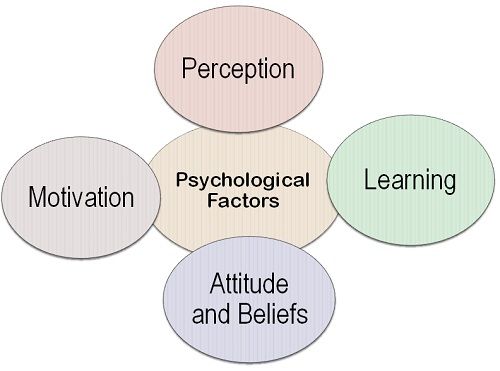Table of Contents
- Some Factors that Can Contribute to Developing a Native-like Accent
- Identity, Emotions, Motivation, Openness, Flexibility, and other Psychological and Affective factors
- What are the SPA factors Related to Foreign Language Acquisition?
- Accent is a Choice
- Identity and Accent
- No Neurological or Age Constraints
- References
Yes, from a perspective developed from extensive cross-disciplinary literature reviews and original quantitative research (Keeley, 2013, 2014) as well personal experience functioning in multiple and diverse languages in numerous domains, I argue that even when one learns an additional language as an adult it is possible to successfully speak with a native-like accent in the target language.
Success depends on many factors that vary over time and situations, so there is bound to be variation in how closely the adult learner/user passes for a native speaker at any given time. These factors interact with one another and are cognitive, sociological, psychological, and attitudinal in nature. Developing a flexible linguistic and cultural identity as well as high language ego permeability* are essential. In this blog I will discuss the factors which contribute to developing a native-like accent.
*For a detailed explanation please see my blog- The Role of Language Ego Permeability in Gaining a Native-like Fluency and Accent in Foreign Languages (Link)
Image Source: Tudip Digital

1) Some Factors that Can Contribute to Developing a Native-like Accent
Willingness to mimic native speakers is essential for achieving a native-like accent in a foreign language.
Observe and imitate their pronunciation, intonation, rhythm, and other linguistic features that contribute to an authentic accent.
By closely observing and mimicking native speakers, you can internalize the subtle nuances of the language and train your vocal apparatus to produce sounds in a similar manner.
Mimicking also helps you develop a sense of the natural flow and cadence of the language.
Regularly expose yourself to native speakers through movies, TV shows, music, podcasts, or conversations. Immerse yourself in the language and try to mimic the accent and intonation patterns of native speakers
Phonetics: Study the phonetic system of the language to understand its unique sounds and how they are produced.
Familiarize yourself with the International Phonetic Alphabet (IPA), a system of symbols used to represent the sounds of human speech. The IPA provides a standardized way to transcribe and study the sounds of different languages. You can gain a deeper understanding of the phonetics of the language you are learning.
This knowledge will enable you to articulate words more accurately and naturally.
Fluency and rhythm: Pay attention to the flow and rhythm of the language.
Native speakers often have a natural cadence and rhythm in their speech. Practice speaking with appropriate pauses, emphasis, and connected speech to sound more fluent and natural.
Cultural context: Language and accent are often influenced by cultural nuances. Familiarize yourself with the culture, customs, and context in which the language is spoken. Understanding the cultural aspects can help you incorporate the appropriate accent and expressions.

2) Identity, Emotions, Motivation, Openness, Flexibility, and other Psychological and Affective factors
However, the main reasons for individual differences encountered in foreign language acquisition and approximating a native-like accent among people of all ages, are related to identity, emotions, motivation, openness, flexibility, and other psychological and affective factors.
I have had the opportunity to observe Chinese students at a Japanese university where our classes are conducted in Japanese for more than 30 There are Chinese students who sound like a Chinese speaking Japanese the moment a few words leave their mouth, while there are those who at times sound like native speakers of Japanese.
It is not so much a matter of knowing grammar and vocabulary; rather it is more a matter of accent and body language. Nevertheless, usually those Chinese who are more successful at mimicking Japanese native accents and body language make less grammatical errors and demonstrate a richer active vocabulary.
Assimilation of a foreign culture in terms of acceptance (not feeling awkward or estranged when functioning in the foreign culture and corresponding language) takes the study of the corresponding foreign language beyond meta-linguistic knowledge (understanding of semantics, grammatical rules, syntax, phonology, etc.) to a level of acquisition that enables a high level of performance in the target language.
In other words, in such a state it does not feel unnatural to participate in the culture and speak the language. There is no feeling of being a traitor to your identity associated with your mother tongue and the culture of your upbringing.
Thus, I hypothesized that the social, psychological, and affective (SPA) factors of individuals who demonstrate successful cultural adaptation (living, working, or studying and functioning in a foreign culture) may also facilitate acquiring a foreign language in the terms of high-level performance defined as approximating that of a native speaker in oral communication. This This hypothesis was strongly supported by a quantitative study carried out with Chinese students at Kyushu Sangyo University in Japan (Keeley, 2014, 2013).

3) What are the SPA factors Related to Foreign Language Acquisition?
Social, psychological, and affective (SPA) factors represent three broad but sometimes overlapping categories of factors.
We can hypothesize that some factors are related to how the learners relate to the social environment in which the learning takes place (social factors), some factors are related to the individuals’ psychological characteristics, and finally, there are differences in affective dynamics (generally associated with emotions) such as feeling, mood, manner, attitude, and so on.
In contrast to what might be considered psychological traits, affective factors are generally seen as being more volatile. Affective factors can be viewed broadly as psychological states related to underlying psychological traits.
Ellis (1994: 483) stated, “Learners’ affective factors are obviously of crucial importance in accounting for individual differences in learning outcomes. Whereas learners’ beliefs about language learning are likely to be fairly stable, their affective states tend to be volatile, affecting not only overall progress but responses to particular learning activities on a day-by-day and even moment-by-moment basis.”
Arnold (1999) defines affect in terms of aspects of emotion, mood or attitude that condition behavior.
Dickinson (1987:25) describes it as being concerned with the learner’s attitude towards the target language and users of it, as well as the learner’s emotional responses.
According to Hurd (2008:219), “The cognitive and metacognitive domains of language learning have been a dominating force on the SLA research agenda for at least three decades, while affective considerations have attracted less interest.

4) Accent is a Choice
Through our accent(s) we reveal affiliation with a specific culture(s) and groups defined at various levels: national, regional, ethnic, social, educational, etc. A foreign accent is ultimately a conscious and/or subconscious choice that is strongly tied to emotions related to identity.
Of course, there are neurological explanations for the lack of recognition and production of sounds in a foreign language that are not critical to meaning in the languages known by the learner. However, all these limitations can be overcome given motivation and effective training, or even without explicit training when one reaches a certain threshold of affinity towards the target language group and is flexible in allowing for the creation of additional linguistic and cultural identities.
The ability to imitate native accents is influenced by attitudes towards the target group and target language. Actually, it is more willingness than ability. It is also modulated by emotional state and general mental state at the time one is speaking.
Jacobsen (2008) hypothesized that subjects who want to blend into the target community more will also try, consciously or unconsciously, to minimize their foreign accents, while subjects who are less concerned with being accepted as legitimate members of the target ethnic community will do so to a lesser degree.
This hypothesis was investigated in a small-scale study of ethnic Russians in the USA focusing on the analysis of the relationship between the degree of L2 accent, or phonological proficiency, and self-identification and on the expression of this analysis in individual variation patterns. In the conclusion Jacobsen (2008:16) states;
Clear interaction between the degree of target accent attainment and self-identification was indeed observed: subjects with higher proficiency and less accent in English tended to identify themselves with the American culture and society to a greater degree than subjects with lower proficiency and greater accent.
A number of studies suggest that adults are in fact capable of attaining a native-like accent, which runs counter to the claims of a critical period hypothesis for additional language acquisition.
Nikolov’s study (2000) involved thirty-three successful language learners aged 20 to 70, all of whom had acquired their target language after puberty. Of these, twenty were of native speakers of various languages learning Hungarian and thirteen were of native speakers of Hungarian learning English.
As judged by three groups of native speakers, six of the learners of Hungarian and five of the learners of English were either generally or often mistaken for native speakers. She observed that, “these successful language learners want to sound like natives, they share intrinsic motivation in the target language which is often part of their profession, or they are integratively motivated. They work on the development of their language proficiency consciously and actively through finding chances for communicating with speakers of the target language, reading and listening extensively…” (p. 122).

5) Identity and Accent
“It’s like everyone tells a story about themselves inside their own head. Always. All the time. That story makes you what you are. We build ourselves out of that story.”- Patrick Rothfuss, The Name of the Wind
The ability and tendency to identify with other human beings plays an essential role in the development and transmission of human culture as well as language acquisition (both primary and additional language acquisition). The first step in the process is the development of a self-concept in infants and viewing others as intentional agents. The latter ability usually occurs between nine to twelve months of age.
Concerning the transmission of culture Tomasello (1999) wrote,
After they (infants) understand others as intentional agents like themselves, a whole new world of intersubjectively shared reality begins to open up. It is a world populated by material and symbolic artifacts and social practices that members of their culture, both past and present, have created for the use of others. To be able to use these artifacts as they were meant to be used, and to participate in these social practices as they were meant to be participated in, children have to be able to imagine themselves in the position of the adult users and participants as they observe them. Children now come to comprehend how ‘we’ use the artifacts and practices of our culture – what they are ‘for’ … this ability to see the self as one participant among others in an interaction is the social-cognitive basis for the infant’s ability to comprehend the kinds of socially shared events that constitute the basic joint attentional formats for the acquisition of language and other types of communication. (p. 91)
Thus, we can view natural language as a symbolically embodied social institution that arose historically from previously existing social-communicative activities and not as some bizarre genetic mutation unrelated to other aspects of cognition and social life as envisioned by Chomsky (1980) and propagated by Pinker (1994).
Language acquisition is also a process of identity construction and how a person sees him/herself in relation to the language being acquired and in relation to the speakers of that language along with their culture. Every time language learners interact in a foreign language, whether in the oral or written mode, they are engaged in identity construction and negotiation.
Wegner (2000:239) commented, “Identity is not an abstract idea or label, such as a title, and ethnic category, or a personality trait. It is a lived experience of belonging (or not belonging). A strong identity involves deep connections with others through shared histories and experiences, reciprocity, affection, and mutual commitments.”
The languages we speak and how we speak them serve to define our linguistic and cultural identities. Everyone has a dialect and speaks with an accent. It is only when the accent and dialect have strong social and political status do people feel that they do not speak with an accent.
Norton (2000: 10) stated, “To invest in a language is to invest in an identity.” Norton uses the term investment to describe the socially and historically constructed relationship of learners to the target language and how it relates to motivation for SLA.
Language is so closely tied to identity that when someone does not look like he/she should speak with a certain accent (e.g., if a person of Pakistani origin speaks with a Scottish accent) people often become suspicious or at least want to find out why it is so. Ethnicity often leads to certain assumptions about language ability in in various cultural and social environments.
In Asia, the native speaker of English is assumed to be Caucasian. In particular, native speakers of English with Asian ethnicity often face discrimination in hiring for positions teaching English in Asia (Kubota & Lin, 2009).
I have lived in Asia all most of my life (mostly in Japan 34 years). The fact that I am 191 cm blonde Caucasian often leads people to often assume that I do not speak the local language. So whether I am in Japan, China, Thailand, Laos, Vietnam, Korea, Indonesia, or Malaysia I must constantly establish that in fact I do speak the local language before the people I am addressing will speak their mother tongue in a natural manner (no pidginization for the supposed benefit of the foreigner or resorting to broken English).
Additionally, both my sons are native speakers of Japanese. Though they do have some slight Asian features inherited from their Japanese mother, their overall appearance and names belie the fact that Japanese is their mother tongue.
However, their speech and mannerisms tend to establish immediate legitimacy as a native speaker of Japanese as long as the interlocutor is open to reading the signals (sometimes people do not see with their eyes nor listen with their ears).
In today’s modern world children are exposed to a wide variety of speech as they acquire their first language (television programs, videos, and all other sorts of audio/visual media). Nevertheless, children acquire a particular style that is emotionally significant for them. McGilchrist (2009) stressed the importance of empathetic identification in the process of acquiring language,
A child does not acquire the skill of language, and more than the skill of life, by learning rules, but by imitation, a form of emphatic identification, usually with his or her parents, or at any rate with those members of the group who are perceived as more proficient. I have suggested that such identification involves an (obviously unconscious) attempt to inhabit another person’s body, and this may sound somewhat mystical. But imitation is an attempt to be ‘like’ (in the sense of experiencing what it is ‘like’ to be) another person, and what it is ‘like’ to be that person is something that can be experienced only from the inside. Not just the acquisition of language, but the everyday business of language involves such inhabiting. Communication occurs because, in a necessarily limited, but nonetheless crucially important, sense, we come to feel what it is like to be the person who is communicating with us. This explains why we pick up another person’s speech habits or tics, even against our will. It explains many of the problems of emotional entrainment in conversation, the countertransference that occurs, not just in therapy, but in ordinary, everyday life, when we experience in our own frames the very feelings that our interlocutor experiences. And empathy is associated with a greater intuitive desire to imitate. (p. 115)

6) No Neurological or Age Constraints
Some people claim that there biological or neurological constraints that can prevent the attainment of a native-like accent in a foreign language. Examination of the evidence overwhelming supports the existence of lifetime neuroplasticity and offers no support for such alleged constraints. The evidence is particularly strong for the existence of significant neuroplasticity in relation to foreign language acquisition.
The topic of neuroplasticity in relation to foreign language acquisition is discussed in more detail in my blog post – Foreign Language Acquisition and Neurological Change – How Language Learning Shapes the Brain (Link)
References:
Arnold, J. (1999). Affect in Language Learning. Cambridge: Cambridge University Press.
Chomsky, N. (1980). Rules and representations. Behavioral and Brain Sciences, 3:1-61.
Ellis, R. (1994). The Study of Second Language Acquisition. Oxford: Oxford University Press.
Hurd, S. (2008). Affect and strategy use in independent language learning. In S. Hurd & T. Lewis (Eds.), Language Learning Strategies in Independent Settings. Second Language Acquisition: 218-236. Bristol, UK: Multilingual Matters
Jacobsen, N. D. (2008). Identity [iz] a [djifiklt] question: A Variationist Analysis of the Relationship Between L 1 Features and Ethnic Identity in the Speech of Russian Learners of English. eVox Georgetown Working Papers in Language, Discourse, & Society, 2: 1-21.
Keeley, T. D. (2013). Kozai Group’s Global Competency Inventory as a Predictor of Oral Performance in Foreign Languages. Journal of Industry and Management of Industrial Management Institute, 45:13-34.
Keeley, T. D. (2014). Psychological Traits Affecting Both Cultural Adaptation and Foreign Language Acquisition. In Leon Jackson, Deon Meiring, Fons J. R. van de Vijver, & E. Idemudia (Eds.) Towards Sustainable Development through Nurturing Diversity. IACCP ebooks. www.iaccp.org/drupal/ ebooks.
Kubota, R. & Lin, A. M. Y. (2009). Race, Culture, and Identities in Second Language Education: Exploring Critically Engaged Practice. New York: Routledge.
McGilchrist, I. (2009). The Master and His Emissary: The Divided Brain and the Making of the Western World. Hew Haven: Yale University Press.
Nikolov, M. (2000). The critical period hypothesis reconsidered: successful adult learners of Hungarian and English. IRAL, 38, 109-124.
Norton, B. (2000). Identity and Language Learning. Harlow: Pearson Education Limited.
Pinker, S. (1994). The Language Instinct. London: Penguin.
Tomasello, M. (1999). The Cultural Origins of Human Cognition. Cambridge: Harvard University Press.
Wegner, E. (2000). Communities of practice and social learning systems. Organization, 7 (2): 225-246.
Reference:
Baker, C. (2006). Foundations of Bilingual Education and Bilingualism (3rd ed.). Clevedon: Multilingual Matters.


